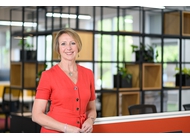Using meaningful consumer insights to drive technical innovation
- Date 18 May 2011
Worn around the neck, Lifeline with AutoAlert features the only pendant-style help button that automatically calls for help if a fall is detected and the wearer is unable to push the help button. As the device detects a fall, it automatically sends signals to caregivers, loved-ones or emergency services via a Philips Lifeline call center. An operator can also communicate directly with the subject through two-way speakerphone capabilities.
The Lifeline with AutoAlert, a leading-edge technical solution, is the end-result of a systematic and well-honed process that was bent on making the best product possible out of a host of consumer insights. The device had to meet a number of challenges posed by this wide range of stakeholders, many of which seemed to conflict with one another. Philips Healthcare initiated extensive research and trials, starting with end-users, and identified a number of the technological challenges. Cambridge Consultants’ Innovation Management team was enlisted to make sense of the myriad consumer needs and, working with the Philips team, devised five unique product concepts that could potentially spur mass appeal.
“In order to calculate the potential impact of a product for the elderly, we had to be sure we knew exactly what made the most sense to the community of potential stakeholders: caregivers, seniors, referral sources and others,” said Rob Goudswaard, Senior Director Product & Services Innovation at Philips Home Monitoring. “Through our collaboration with Cambridge Consultants, the effective use of workshops helped us to crystalize the data we had amassed into a diverse range of product concepts in the area of fall prevention and fall detection.”
“The challenge quickly becomes how to make a successful product that is meaningful to each consumer constituency,” said Lucy Rowbotham, Consulting Director, head of Innovation Management at Cambridge Consultants. “In this case where the user is an elderly person, we were forced to conceive ideas for individuals who many times are reluctant to admit their own needs. However, using our unique innovation management approach, we were able to aggregate and evaluate all of the different data sets and churn out practical technology concepts that were attractive to not only users, but buyers and endorsers as well.”
The development process that ultimately sparked the Philips Lifeline with AutoAlert, began with the five product concepts ranging from the height and motion sensing technology seen in the Philips Lifeline with AutoAlert, to a light-based solution.
Philips Healthcare reports that more than half of new customers opt for the Philips Lifeline AutoAlert premium service for the elderly, which was launched in 2010.



